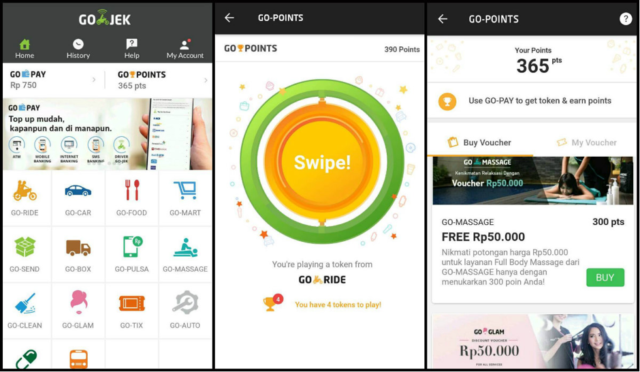What We Can Learn From Go-Points Loyalty Program

By: Dr. Evi Rinawati Simanjuntak, M.M.
Customer loyalty management refers to a continuous process designed with the objective of keeping a customer satisfied so that he/she will provide more business (Makkar & Makkar, 2012). Excellent customer service is the key element in gaining customer loyalty. However, many times organization faces the failure of their loyalty program. Researchers noted several reasons why those loyalty programs fail; it maybe because a poor design, insufficient/unattractive reward policy, poor implementation on the field, program not communicated properly, or missing the alignment between loyalty program and organizational policies and procedures. Gojek’s Go-points is one of the examples in which a loyalty program is not creating a big success.
For every transaction made in Go-Jek, they would give the customer one token, in which customers can ‘spin’ the tokens that they have collected to see how many points they get from each of the tokens. Go-Jek customers then can collect these points and exchange it for the various voucher that were offered at the time. Previously, Go-Jek offered a vast number of vouchers in different categories; including entertainment, food & beverages, travel, and Go-Jek voucher purchases.

Sometime ago, they changed the design of the Go-Points section and along with it, also the vouchers that they offered. What used to be full of varieties where customers could even get free concert tickets or flight discounts, are now limited to mostly Go-Jek services vouchers; Go-Car discounts, free ride using Go-Ride, etc. The offers had significantly reduced in amount and value, as Go-Jek also often gives similar vouchers regardless of the tokens. In addition to that, there has been some news where customers purchased a hotel voucher through Go-Points but could not redeem it.
It turns out that Go-Points is not a very successful loyalty program as it loses its value instead of adding it, driving customers away from repurchasing with the incentive of the vouchers they could receive. Insufficient incentives are a top cited factor among loyalty members who drop their programs. Consumers cite unclear value propositions in the new Go-Points program, therefore lackluster program benefits. In addition to that, irrelevant offers for reward points make customers not appreciating loyalty rewards programs anymore.
If Gojek were to (re)design a loyalty program, they should think carefully about the value exchange between the existing program and their customers. Company needs to understand clearly how value is created and distributed on both sides of that equation, and make sure the program facilitates this exchange. Actions should be proactive and should never rely on the program earn and burn policy to do all the work. Loyalty program should be active, not passive and make rewards reachable and valuable.
Dr. Evi Rinawati Simanjuntak is currently a Subject Content Coordinator and Faculty Member in Business Management and Marketing Program at Binus Business School International Undergraduate Program. Further about her profile can be found here.
(Students in Business Management and Marketing – International Undergraduate Program will learn relevant topics on customer relationship management under the course: Web Analytics and e-CRM. Visit our Business Management and Marketing curriculum to know more.)

